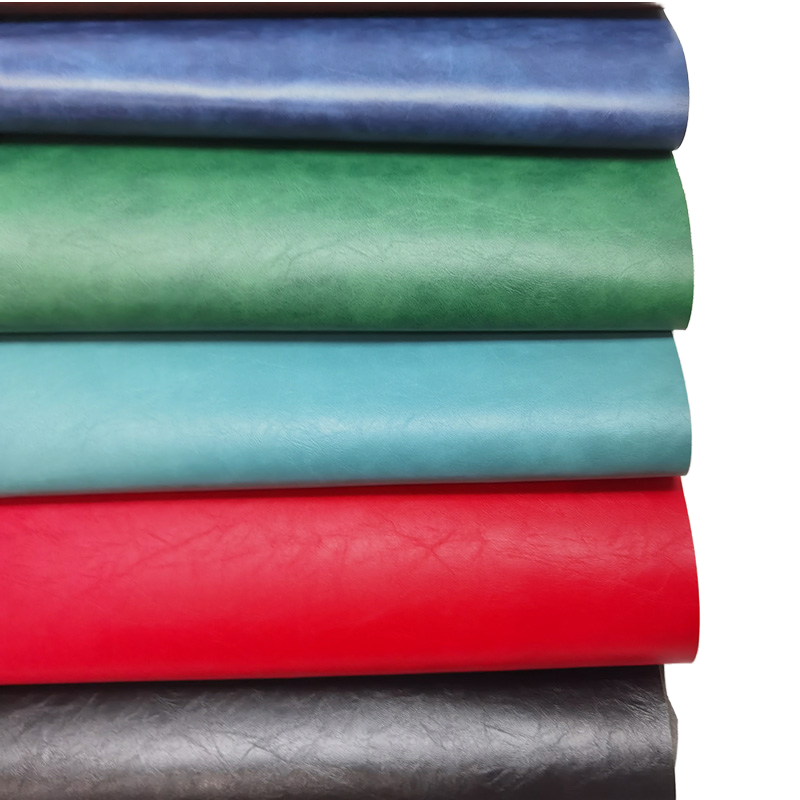Exploring the Versatility of Leather for Crafting Labels
Jun 16,2025

When it comes to creating labels for various textiles, "cuero para hacer etiquetas," or leather for label making, is an excellent choice that combines durability, aesthetic appeal, and versatility. Leather labels can add a touch of elegance and authenticity to your products, making them stand out in a competitive market. In this article, we will explore the different types of leather suitable for crafting labels, their properties, and the advantages they offer.
One of the most popular types of leather for labels is vegetable-tanned leather. This type of leather is processed using natural tannins, making it environmentally friendly. Vegetable-tanned leather is known for its durability and ability to age beautifully, developing a unique patina over time. This characteristic makes it particularly appealing for brands that wish to convey a sense of heritage and craftsmanship in their products.
Another option is chrome-tanned leather, which is treated with chromium salts. This process results in a softer, more flexible leather that is resistant to moisture and staining. Chrome-tanned leather is often used for labels on items that require a level of water resistance, making it ideal for outdoor or activewear products. In addition, the vibrant colors achievable with chrome tanning can enhance your branding efforts.
For those looking for a sustainable option, eco-leather or recycled leather might be the answer. Eco-leather is made from post-consumer waste, making it an environmentally conscious choice without sacrificing quality. Labels made from eco-leather can appeal to consumers who prioritize sustainability in their buying decisions, thus enhancing your brand's image as socially responsible.
In addition to the various types of leather, it’s essential to consider the finishing techniques that can be applied to leather labels. Techniques such as embossing or debossing can create a tactile element that adds depth to your branding. Printing methods, including screen printing and digital printing, allow for vibrant designs and intricate details, ensuring that your labels are not only functional but also visually appealing.
The versatility of leather in label making extends beyond just aesthetics. Leather labels offer excellent durability compared to traditional paper labels, which can tear or fade over time. This longevity means that your branding will remain intact throughout the product's lifecycle, reinforcing brand recognition and customer loyalty.
In summary, utilizing "cuero para hacer etiquetas" opens up a world of possibilities for enhancing your products. With options like vegetable-tanned, chrome-tanned, and eco-leather, you can choose the type that best aligns with your brand values and customer expectations. By incorporating leather labels, you not only improve the visual appeal of your products but also communicate quality and craftsmanship to your consumers.
One of the most popular types of leather for labels is vegetable-tanned leather. This type of leather is processed using natural tannins, making it environmentally friendly. Vegetable-tanned leather is known for its durability and ability to age beautifully, developing a unique patina over time. This characteristic makes it particularly appealing for brands that wish to convey a sense of heritage and craftsmanship in their products.
Another option is chrome-tanned leather, which is treated with chromium salts. This process results in a softer, more flexible leather that is resistant to moisture and staining. Chrome-tanned leather is often used for labels on items that require a level of water resistance, making it ideal for outdoor or activewear products. In addition, the vibrant colors achievable with chrome tanning can enhance your branding efforts.
For those looking for a sustainable option, eco-leather or recycled leather might be the answer. Eco-leather is made from post-consumer waste, making it an environmentally conscious choice without sacrificing quality. Labels made from eco-leather can appeal to consumers who prioritize sustainability in their buying decisions, thus enhancing your brand's image as socially responsible.
In addition to the various types of leather, it’s essential to consider the finishing techniques that can be applied to leather labels. Techniques such as embossing or debossing can create a tactile element that adds depth to your branding. Printing methods, including screen printing and digital printing, allow for vibrant designs and intricate details, ensuring that your labels are not only functional but also visually appealing.
The versatility of leather in label making extends beyond just aesthetics. Leather labels offer excellent durability compared to traditional paper labels, which can tear or fade over time. This longevity means that your branding will remain intact throughout the product's lifecycle, reinforcing brand recognition and customer loyalty.
In summary, utilizing "cuero para hacer etiquetas" opens up a world of possibilities for enhancing your products. With options like vegetable-tanned, chrome-tanned, and eco-leather, you can choose the type that best aligns with your brand values and customer expectations. By incorporating leather labels, you not only improve the visual appeal of your products but also communicate quality and craftsmanship to your consumers.






